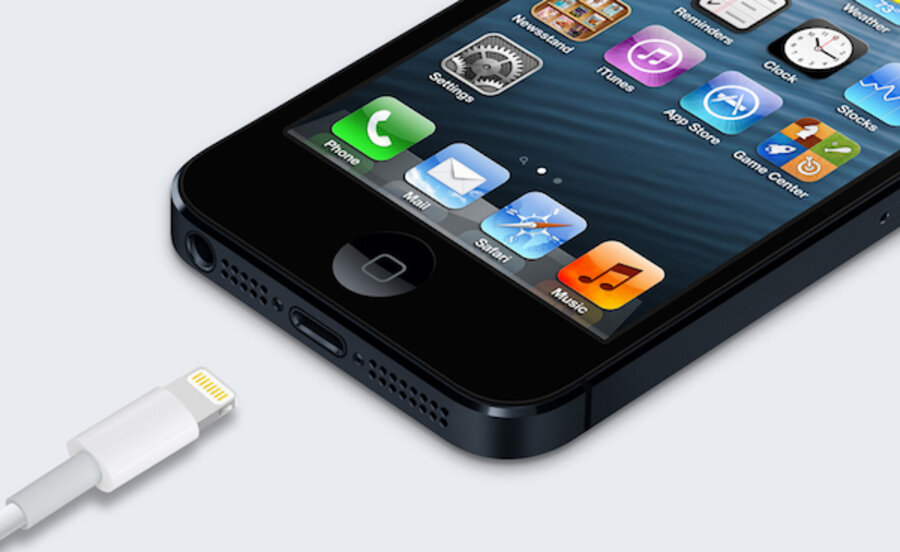iPhone 5 features: faster, slimmer – but not exactly overhauled
Loading...
The iPhone 5 is here.
On Wednesday, Apple marketing chief Phil Schiller exuberantly unveiled the latest addition to the top-selling iPhone line, which he said was at least 18 percent thinner and 20 percent lighter than the iPhones that have come before. Measuring 4.87 inches from bottom to top, and boasting a 4-inch "retina display" screen, the iPhone 5 is also taller than previous iPhone models, but not wider.
It's a good looking phone, obviously – a "jewel," in Schiller's words. But consumers hoping for a major iPhone makeover may be disappointed. The iPhone 5 retains the boxy shape and hard lines of the iPhone 4 and iPhone 4S (although it includes a two-tone brushed aluminum frame). There's no radically curving glass here – no groundbreaking and risky design elements. For that, we'll probably have to wait yet another year.
Luckily, we won't have to wait for a set of greatly improved hardware. The iPhone 5 gets an A6 processing chip, which Apple is claiming more than doubles the speed of the A5 chip in the iPhone 4S and second- and third-generation iPad tablets. In addition, Apple has equipped the iPhone 5 with LTE capability, which means that the handset can tap into the highest-speed data networks, as well as 3G and 3G+ networks from Verizon, AT&T, Sprint, and many foreign carriers.
Elsewhere, look for improved headphones, a better camera (although megapixel count stays at eight), more battery life, and, as predicted, a smaller dock connector dubbed "Lightning." Prices will remain unchanged from the iPhone 4S, Apple says: $199 for a 16 gigabyte iPhone 5; $299 for the 32GB model; and $399 for the top-of-the-line, 64GB handset.
All prices are subsidized, of course, which means (assuming you're in the US) you've got to sign a contract with Sprint, AT&T, or Verizon.
Planning on picking up the iPhone 5? What won you over? Drop us a line in the comments section. And to receive regular updates on how technology intersects daily life, follow us on Twitter @venturenaut.





